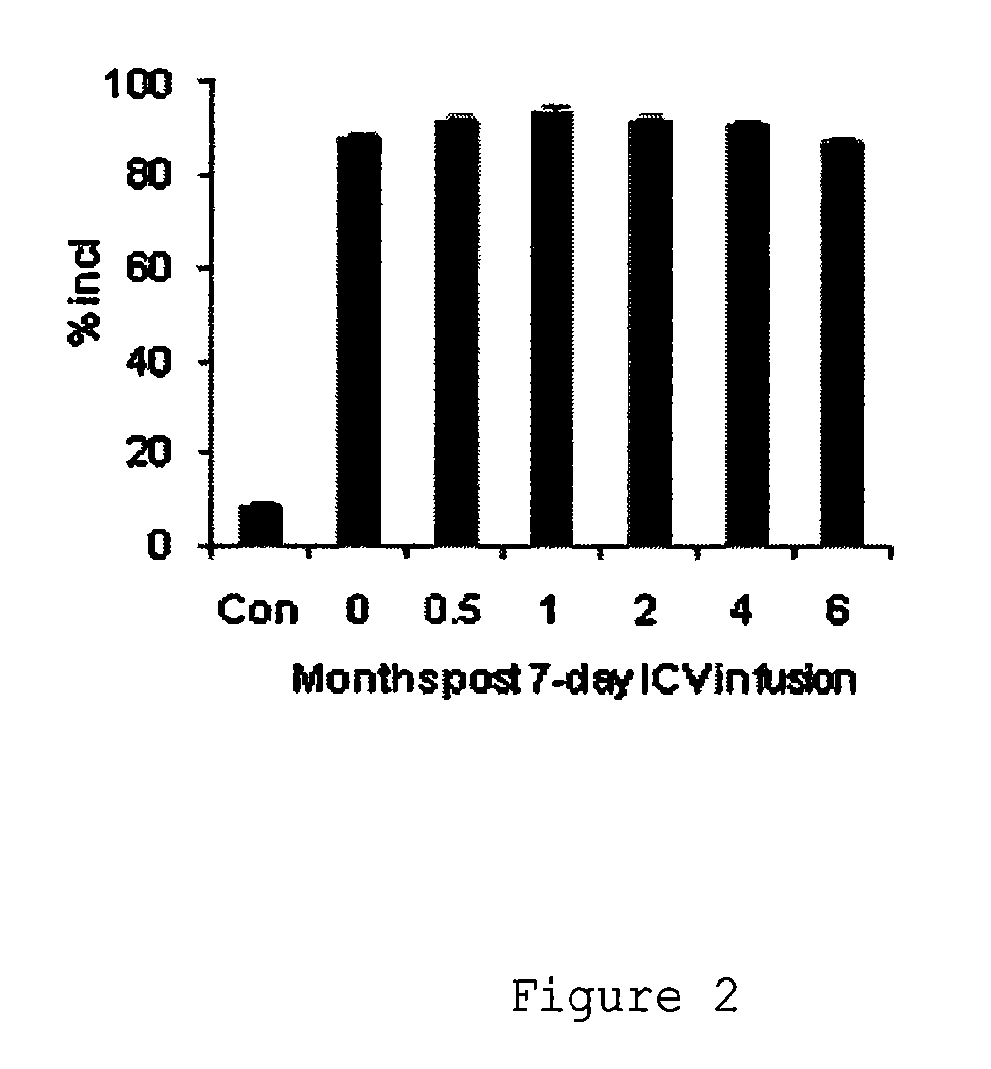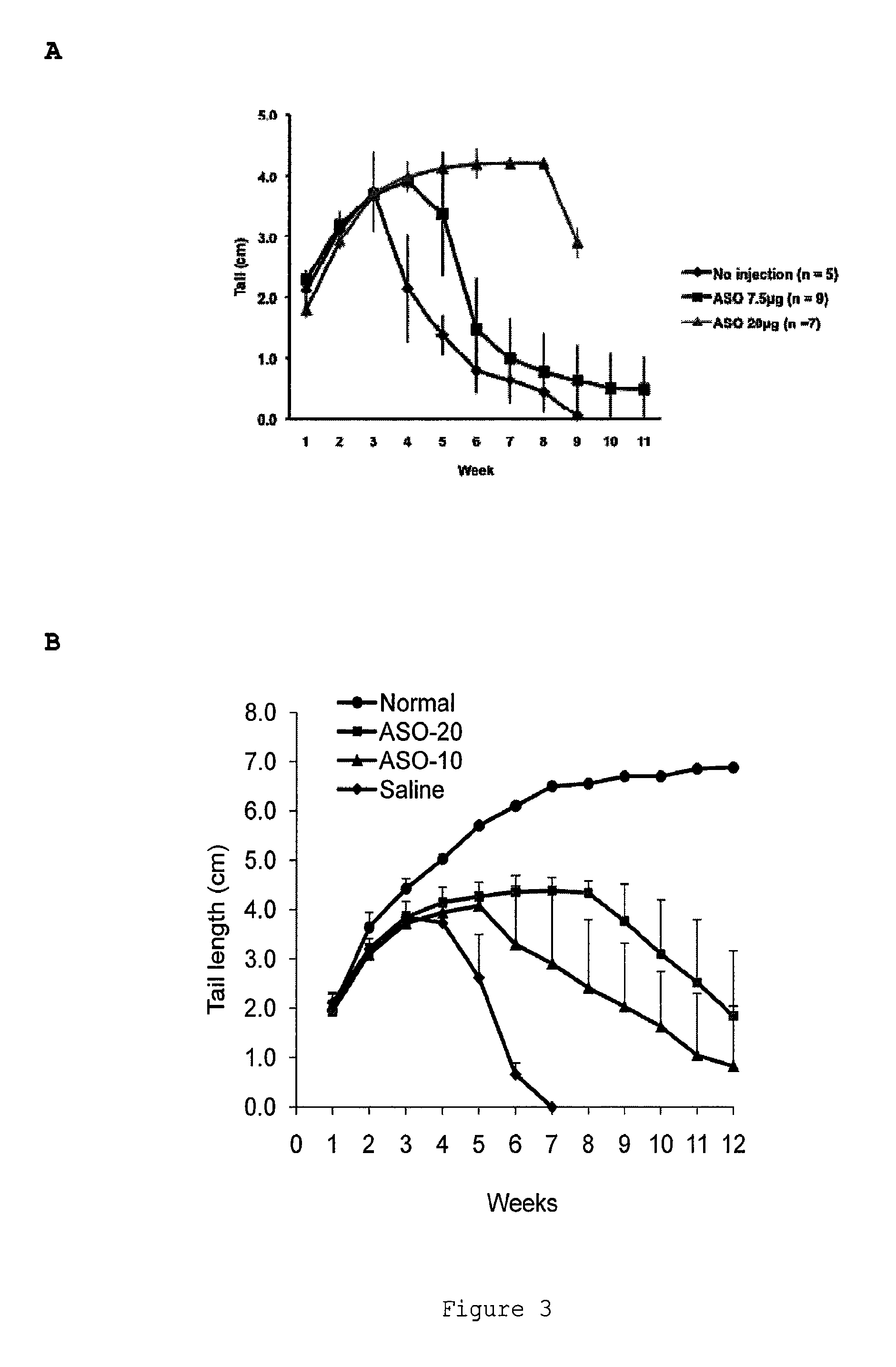Compositions and methods for modulation of SMN2 splicing in a subject
a smn2 splicing and composition technology, applied in the field of compositions and methods for modulating smn2 splicing in a subject, can solve the problems of inefficient inclusion of exon 7 in smn2 transcripts, death among subjects, etc., and achieve the effects of increasing the inclusion of exon 7 amino acids
- Summary
- Abstract
- Description
- Claims
- Application Information
AI Technical Summary
Benefits of technology
Problems solved by technology
Method used
Image
Examples
example 1
Antisense Compounds Targeting SMN2
[0259]The following oligonucleotides were synthesized using standard techniques previously reported.
[0260]
SEQReference #SequenceLengthChemistryIDISIS396443TCACTTTCATAATGCTGG18Full 2′-1MOE;full PSISIS396449TTTCATAATGCTGGC15Full 2′-2MOE;full PSPS = phosphorothioate internucleoside linkages
example 2
Smn− / − SMN Transgenic Mice
[0261]Therapeutic effectiveness and safety using the antisense compounds as described above can be tested in an appropriate animal model. For example, animal models which appear most similar to human disease include animal species which either spontaneously develop a high incidence of the particular disease or those that have been induced to do so.
[0262]In particular, animal models for SMA are known. As explained above, the molecular basis of SMA, an autosomal recessive neuromuscular disorder, is the homozygous loss of the survival motor neuron gene 1 (SMN1). A nearly identical copy of the SMN1 gene, called SMN2 is found in humans and modulates the disease severity. In contrast to humans, mice have a single gene (Smn) that is equivalent to SMN1. Homozygous loss of this gene is lethal to embryos and results in massive cell death, which indicates that the Smn gene product is necessary for cellular survival and function. The introduction of 2 copies of SMN2 in...
example 3
Systemic Administration of Antisense Compounds In Vivo in Smn− / − SMN2 (Taiwan Strain)
[0265]Taiwan mice were treated by intraperitoneal injection with saline or with 35 mg / kg of ISIS396443 or a mismatched antisense oligonucleotide control once each day for 5 days and were sacrificed 2 days later on day 7. Liver and kidney were collected and RNA was isolated using standard techniques. SMN2 with and without exon 7 was visualized by RT-PCR. Administration with ISIS396443 resulted in substantial increase in exon 7 inclusion in the SMN2 from kidney and liver compared to saline and mismatch control treated animals.
PUM
| Property | Measurement | Unit |
|---|---|---|
| body weight | aaaaa | aaaaa |
| body weight | aaaaa | aaaaa |
| body weight | aaaaa | aaaaa |
Abstract
Description
Claims
Application Information
 Login to View More
Login to View More - R&D
- Intellectual Property
- Life Sciences
- Materials
- Tech Scout
- Unparalleled Data Quality
- Higher Quality Content
- 60% Fewer Hallucinations
Browse by: Latest US Patents, China's latest patents, Technical Efficacy Thesaurus, Application Domain, Technology Topic, Popular Technical Reports.
© 2025 PatSnap. All rights reserved.Legal|Privacy policy|Modern Slavery Act Transparency Statement|Sitemap|About US| Contact US: help@patsnap.com



